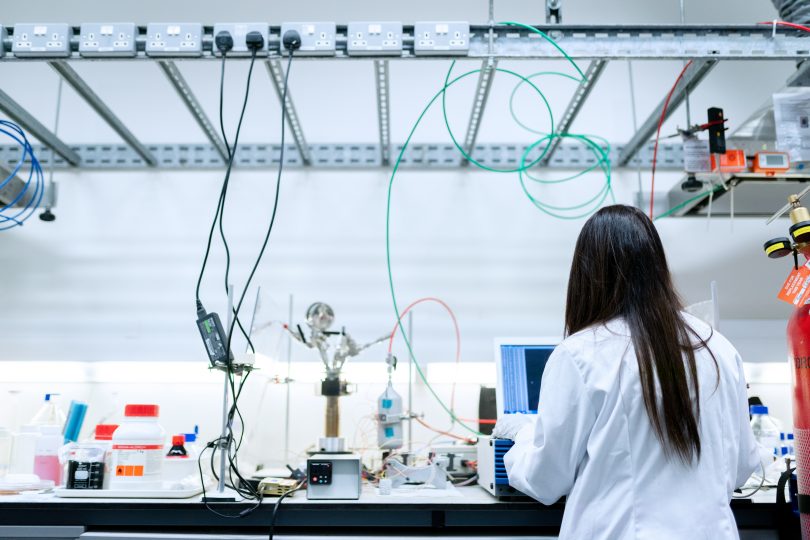By Sydney Wyatt
Boston University News Service
In 2020, Robert Malone revolutionized the pharmacological industry by finalizing the creation of the mRNA vaccines used to combat COVID-19.
Except he didn’t. At least not alone.
On search engines like Google, Robert Malone is widely credited as the inventor of mRNA vaccines, and he claims to have developed the technology. However, it is a myth in the papers. The messenger RNA, or mRNA, technology used in COVID-19 vaccines is a more than 30-year-long collaborative effort from over 100 scientists, many of whom were women. These women may not be widely known as major players in mRNA biotechnology creation, but they played critical roles in the eventual vaccine development.
Katalin Karikó, a biochemist, is one of the women who contributed to developing the mRNA technology. Karikó has spent more than 40 years researching mRNA, and in the 1990s, her primary focus became harnessing the therapeutic potential of mRNA. Unfortunately, funding was the biggest challenge to proceed with her project. She faced several rejections from grant agencies and was demoted from her role at the University of Pennsylvania, losing her tenure track.
In 2005, she and her colleague, Drew Weissman, discovered a way to modify mRNA to be used in the body to fight disease without causing an inflammatory reaction. This discovery was a building block for mRNA vaccine development that could lead to numerous other treatments. In January 2021, UPenn released a promotional video about this breakthrough in which Weissman was the subject of the video, and Karikó was mentioned only briefly.
Karikó’s story is a classic example of gender bias in the scientific community, but her story is not the only one. One of the most iconic examples is Rosalind Franklin, who discovered the helical structure of DNA — the credit for which often goes to James Watson and Francis Crick. Other examples include Lise Meitner, who discovered nuclear fission, and Katherine Johnson, who confirmed the trajectory data that took the first American into space. These women remained in the shadows for far too long despite their vital contributions to scientific advancement.
Women have been a part of the scientific community since the 1800s and, according to the U.S Bureau of Labor Statistics, only make up 28% of the science, technology, engineering, and mathematics workforce in the United States. Rebecca Prosser, University of Tennessee Knoxville professor and principal investigator of the Prosser Neurobiological Research Lab, believes this issue can be credited partially to the early mentorship received by young men and women.
“A lot of this issue goes way back to high school and maybe even earlier than that, as to which directions men and women are steered towards,” Prosser said.
Prosser asserted the importance of female mentors that can get women “excited” about scientific careers. In physical science classes in colleges, men were found to outnumber women, but women had statistically scored higher course grades and higher average GPAs. Students still assumed that men outperform women, and men were less likely to ask their female peers for help, according to a 2020 study at Colorado State University.
As a member of the neuroscience community for over 40 years, Prosser said that many of her early mentors were female. With neuroscience being a relatively new field of research, the community has a lot of female representation. It has helped Prosser feel valued and respected in the same way as her male colleagues have been.
Amy Blankson, a researcher who focuses on happiness and technology, said that “girls start doubting their STEM intelligence by age six and continue to lose confidence as classes become less gender-balanced and more intimidating.” Having a female mentor can help eliminate some of these insecurities and internal biases, as it showcases the attainability of a career in the STEM field.
Though the representation of women in science has been increasing, visibility and workplace equality remain low.
Women in academia experience significant disparities in recognition, citations, and salary. However, female and male principal investigators publish a comparable number of papers each year, according to a 2020 study published by the official journal of the National Academy of Sciences, PNAS.
Chelsea Webber, a Ph.D. candidate in the Wolozin Neurodegenerative Research Lab at Boston University, feels that the wage gap in the scientific community reflects the unequal treatment women receive in academia.
“What I would like to see is better wages for women in academia … Making $50,000 a year with a Ph.D. is unacceptable,” said Webber.
The problem of gender bias and inequality is a deep-rooted and multidimensional one. There is no one way to combat this issue, but there are many steps we can take.
Women deserve credit for their work. By advocating for them and sharing their stories, visibility increases. It is important to credit women for their work that will help to eliminate gender bias in the community.
By continuing to diversify the workforce, female mentorship becomes more accessible to upcoming women in science. These mentors can make young women aware of the numerous options and encourage future science leaders to pursue their goals to the fullest, just like Katalin Karikó did, despite all odds.





